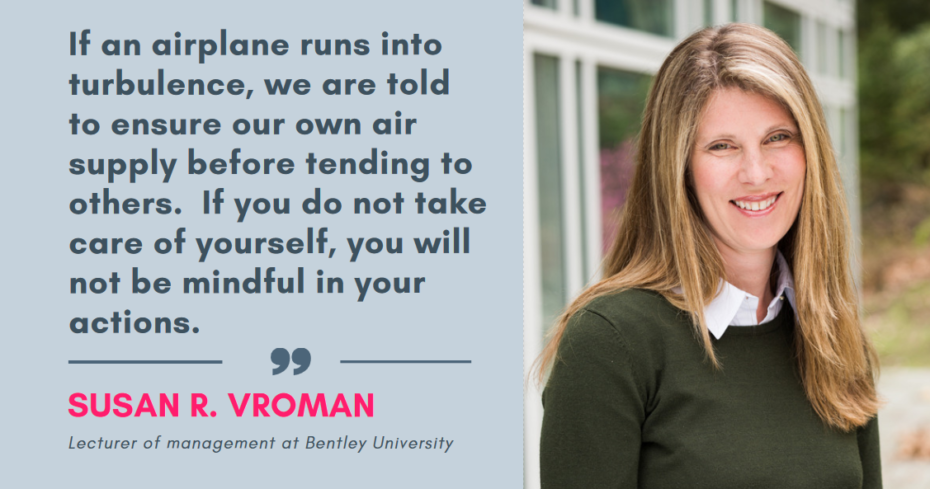.
The past several months have been tremendously challenging for women in management positions. Without a clear model for leadership excellence at the workplace, or even a consensus around preferred behavioral choices (e.g., assertiveness vs. collaboration) for women leaders, those who found success were said to be either savvy or lucky, and there was no authority who could prove otherwise. And yet, I would argue that there is one common thread in the efficacy of women leaders that bears potential to maintain positive influence throughout the pandemic: embedding resonant leadership.
I’ll back up. Like many others who have looked at leadership issues in complex times, I’ve found the research to be very encouraging. We know that in precarious times, women perform very well on the glass cliff. In times of stress, women typically follow their natural communal instincts, and both listen to and tend to the needs of others. As a result, their teams experience emotional contagion: they are encouraged to be compassionate and empathetic to one another. In short, women who are in synch with or work to understand what is driving their teams emotionally foster positive work environments.
Managers who establish synchrony engage their followers while paving the way to leadership resonance that lasts. Team members who believe that their priorities are validated (at least as considerations against organizational strategy) also feel respected. In hard times, these same workers will look to compassionate leaders with hope, and are willing to follow them too.
When times are tough, uncertainty is high but distractions are higher. The noise to signal ratio goes up; all eyes turn to the leader. If the leader leverages fear and anxiety, s/he may harness it like a demagogue who propels further action with negative energy. The leader who takes her/his time to think, taking inventory of the situation while recognizing what is being asked both of her/his team and her/himself, and responds positively…this is the resonant leader. Daniel Goleman, Richard Boyatzis, and Annie McKie, who coined this term, argued that resonant leaders apply emotional intelligence towards driving the success of others. This resonance, I propose, is the leadership fuel that sustains teams through difficult times.
It is well established in the literature that tangible rewards can only go so far; there are limited titles to distribute, corner offices to assign, and things to buy. Intrinsic motivation is both more enduring and resilient under stress. Followers who genuinely feel connected to their work and their leaders are overall more engaged and committed to staying. It is fair to conclude, therefore, that this sentiment extends to those workers who felt connected to their leaders prior to the pandemic…and still do now.
Recent years have shown industry women such as Ann Mulcahy (Xerox), Mary Berra (General Motors), and Prime Ministers Jóhanna Sigurðardóttir (Iceland) and Theresa May (United Kingdom) assuming leadership roles in difficult circumstances. While each woman is unique, it is reasonable to argue that each of these leaders achieved success both because of what they did as well as how they did it. Getting a company, much less a country, through tenuous times requires a model that re-energizes itself. If this energy came only from the leader it would soon be depleted. However, by invoking the resonant leadership model, these women caused a positive emotional contagion which sustained followers for the duration.
How then, you may ask, can leaders focus their energy to sustain the same impact they established before the pandemic? My response would be to actively channel the fundamentals of resonant leadership:
Priority one: take care of yourself.
If an airplane runs into turbulence, we are told to ensure our own air supply before tending to others. If you do not take care of yourself, you will not be mindful in your actions. So, ground yourself and take inventory of your values and goals. Next, consider how you wish for others to think of you in this pandemic, then identify where you are. Whether through meditation, journaling, or talking with a trusted mentor, it is important to thoughtfully ground yourself before you resume leading others.
Ask questions
It is said that people admire those who are interesting, they are influenced by those who are interested. Remember, the starting point for the resonant leadership model is not how we lead, but if we’re in synch with the audience. You may not perceive that there is opportunity to explore all of your options, but engagement with the team to understand their questions and concerns along the way informs the your decision-making to get through the crisis. Engagement will continue as they see their values reflected in your decisions.
Assess, and reassure, before you react.
When times get complicated, stress and anxiety go up…and so do the consequences of the decisions. With heightened optics, many people feel the pressure to perform. Chances are, while you may not have rehearsed the exact pandemic scenario we are currently facing, you have relatable experiences. Ensuring, articulating, then demonstrating how your decisions uphold what is valued continues the powerful positive synchrony of resonant leadership.
 Susan R Vroman is a Lecturer of management at Bentley University. Her research interests include the impact leadership enactment has on organizational culture and employee engagement, with specific focus on supporting flexible work arrangements, and women’s leadership studies. Prior to her academic career, Dr. Vroman worked for over 20 years as an organizational effectiveness and strategic human resource management executive and advisor. She continues this work in a consulting capacity.
Susan R Vroman is a Lecturer of management at Bentley University. Her research interests include the impact leadership enactment has on organizational culture and employee engagement, with specific focus on supporting flexible work arrangements, and women’s leadership studies. Prior to her academic career, Dr. Vroman worked for over 20 years as an organizational effectiveness and strategic human resource management executive and advisor. She continues this work in a consulting capacity.






